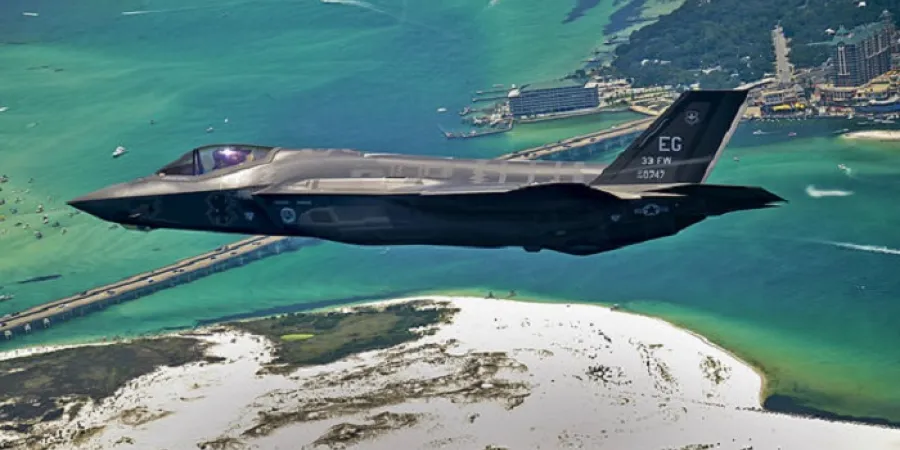US Wants to Use F-35s as Missile Defense Sensors
The US Navy plans to integrate the F-35 and other airborne sensors into its next-generation networking architecture, the Naval Integrated Fire Control-Counter Air
Dan Arkin
| 13/08/2017
The US Army is interested in the Lockheed Martin F-35 Lightning II, but not for dropping bombs, close air support or dogfighting. The service believes the F-35 has potential as an airborne sensor for integrated air and missile defense. It could provide targeting data to land-based interceptor systems such as Patriot long before those threats show up on ground radars.
An official with the US Army Space and Missile Defense Command/Army Forces Strategic Command (USASMDC/ARSTRAT) says a classified forum has been established to investigate how the F-35 community can support the air and missile defense mission, According to Aviation Week.
Richard De Fatta, director of the USASMDC/ARSTRAT’s future warfare center, says discussions are ongoing about how to integrate the Joint Strike Fighter for taking out ballistic and cruise missiles. Army interest in the F-35 follows a successful demonstration by the Navy in 2016, during which a Marine Corps F-35B directed Raytheon’s Standard Missile-6 against a target drone.
The Navy’s ultimate goal is to seamlessly integrate the F-35 and other airborne sensors into its next-generation networking architecture, the Naval Integrated Fire Control-Counter Air. Although not a substitute for the E-2D, the low-observable F-35 flies faster and is more survivable. The aircraft’s stealth features allow it to get closer to potential threats without being detected.
[Source: Aviation Week]
The US Navy plans to integrate the F-35 and other airborne sensors into its next-generation networking architecture, the Naval Integrated Fire Control-Counter Air
The US Army is interested in the Lockheed Martin F-35 Lightning II, but not for dropping bombs, close air support or dogfighting. The service believes the F-35 has potential as an airborne sensor for integrated air and missile defense. It could provide targeting data to land-based interceptor systems such as Patriot long before those threats show up on ground radars.
An official with the US Army Space and Missile Defense Command/Army Forces Strategic Command (USASMDC/ARSTRAT) says a classified forum has been established to investigate how the F-35 community can support the air and missile defense mission, According to Aviation Week.
Richard De Fatta, director of the USASMDC/ARSTRAT’s future warfare center, says discussions are ongoing about how to integrate the Joint Strike Fighter for taking out ballistic and cruise missiles. Army interest in the F-35 follows a successful demonstration by the Navy in 2016, during which a Marine Corps F-35B directed Raytheon’s Standard Missile-6 against a target drone.
The Navy’s ultimate goal is to seamlessly integrate the F-35 and other airborne sensors into its next-generation networking architecture, the Naval Integrated Fire Control-Counter Air. Although not a substitute for the E-2D, the low-observable F-35 flies faster and is more survivable. The aircraft’s stealth features allow it to get closer to potential threats without being detected.
[Source: Aviation Week]



